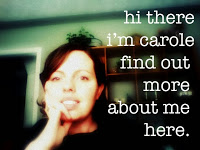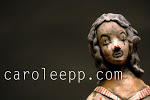by Carole Epp | Feb 15, 2016 | Uncategorized
a benefit for the ASU Art Museum Ceramics Research Center
at the ASU Art Museum Brickyard
We’re getting ready for a high-energy party!s
Ceram-A-Rama 2016 will be an unforgettable night of drinks,
appetizers, silent and live auctions and music at the ASU Art Museum
Brickyard. This year’s event honors Paul J. Smith, director emeritus of
the Museum of Art and Design in New York City, on the occasion of his
new exhibition of artist portraits at the museum. The festivities also
coincide with the 15th Annual Self-Guided Ceramic Studio Tour
organized by the CRC Artists Advisory Committee, Feb. 20–21, 2016.
While you’re here, experience the full spectrum of ceramics in the
Phoenix-metro area with a special VIP package.
Ceram-A-Rama VIP Package includes:
- Evening tour kickoff event on Feb. 17 with Ceramic Studio Tour artists;
- Two-day bus tour of the valley led by retired
Ceramics Research Center curator Peter Held, Feb. 18–19 – visit
collector’s homes, artist studios, local cultural attractions and
private receptions (detailed information for the bus tour);
- Reserved seats for a special lecture with Paul J. Smith;
- Exclusive dining and shopping opportunities; and
- VIP admission and seating at the Ceram-A-Rama party
at the ASU Art Museum Brickyard, Feb. 20, where we’re hosting live and
silent auctions of regionally and nationally renowned artists.
| •$500 |
Two – Day VIP Bus Tour Package per person |
|
Includes: VIP Ceram-A-Rama Ticket |
| •$650 |
VIP Ceram-A-Rama table of eight |
| •$100 |
VIP Ceram-A-Rama ticket per person |
|
Includes: Ceram-A-Rama Ticket plus |
|
Auction preview |
|
Reserved seating for lecture by Paul J. Smith |
|
VIP reception with Paul J. Smith |
|
Reserved seating at Ceram-A-Rama |
|
Pre-paid parking at the Brickyard |
| •$35 |
Ceram-A-Rama ticket per person |
| •$25 |
Ceram-A-Rama Early Bird ticket per person (end Feb. 13) |
|
Includes: |
|
Open bar and complementary appetizers |
|
Live music and dancing |
|
Silent and live auctions |
|
Free parking in Lot 20 near ASU Art Museum (Mill &10th) |
To reserve your VIP package today, or to inquire about donation of
artwork and volunteer opportunities, contact Mary-Beth Buesgen at [email protected].
http://asuartmuseum.asu.edu/ceramarama/
by Carole Epp | Aug 5, 2014 | Uncategorized
 |
| The exhibition space at the CRC Brickyard |
Ceramic Research Center Makes A Move
by Tom Budzak (www.tombudzak.com)
photos by Melissa Budzak
 |
| The exhibition space at the CRC Brickyard |
 |
| The exhibition space at the CRC Brickyard |
 |
| A view of the display cases and works by Jun Kaneko |
With over 3,500 pieces from the 1950s to the present, the ASU Art
Museum’s Ceramic Research Center houses one of the most significant
collections of contemporary ceramics in the U.S. As you can imagine,
when the center needed to relocate a mile down the road due to
construction near campus it was no small feat. The new location, know as
the Brickyard, provides the same access for students, scholars and the
public for research and inspiration. There is open storage of the
permanent collection and a exhibition space for curated shows. There is
something for everyone in the CRC’s collection; hours can be lost
looking through the cabinets at the truly impressive mixture of ceramic
pieces. The new, larger space allowed for the addition of a retail shop
that showcases talented local and national ceramic artists.
 |
| Polka-Dot Mushroom. Allan Widenhofer, 1967, glazed stoneware 19×13 inches |
 |
| Discover America. Erik Gronborg, 1972, glazed earthenware, lusters, 3 ¼ x 13 ¼ x 15 3/8 inches |
In addition to a change in location, there will soon be a change in
curator. In his final show as curator prior to his retirement after 11
years, Peter Held pulled together a fantastic show centered on the idea
of the passion and compulsion in people to collect. The show, These
Are Some of My Favorite Things, features permanent collection pieces
alongside eight collections on loan from private collectors. The show
highlights cabinets of curiosities, knickknacks, and creative tableaus
from local artists, designers and the public-at-large. There are kitschy
pieces, wood, watercolors, found objects and, of course, ceramic
works. The eight collections on loan include: Cyndi Coon (small white
objects); Emily Long (vintage Arizona objects); Gretchen Freeman (folk
and naïve art); Mark Klett (sunrise sticks); Randall and Katherine
Schmidt (military trench art); Joe Willie Smith (African folk and naïve
art); Kathleen Vanesian (Mexican folk art) and Kurt Weiser (childhood
and travel memorabilia). All of the collections have their own appeal,
but Kurt Weiser’s collection of odds and ends is delightful and a great
incite into possible inspiration in the studio.
 |
| One of Kurt Weiser’s cabinets from his studio show the items from childhood and travel memorabilia that serve as inspiration. |
 |
| One of Kurt Weiser’s cabinets from his studio show the items from childhood and travel memorabilia that serve as inspiration. |
 |
| Cyndi Coon’s collection of small white objects evoke a peaceful nostalgia and show her eye for design. |
 |
| Cyndi Coon’s collection of small white objects evoke a peaceful nostalgia and show her eye for design. |
The pieces that were chosen by Peter Held from the permanent collection
focused on the Funk Movement of ceramics. The Funk Movement is one of
Held’s favorite time periods in the growth in the American studio
ceramics. Robert Arneson at the University of California-Davis
influenced the Funk Movement greatly, guiding students to explore new
areas in the medium. Fittingly, one of the stand out pieces was Robert
Arneson’s “House Box” from 1966 (Stoneware, Luster that measures 8 ½ x 8
x 5 ¾ inches). Other artists included in the show are Fred Bauer,
David Gilhooly, Erik Gronborg, Peter VandenBerge and Patti Warashina.
 |
| Firey. Sergei Isupov, 2009, stoneware, stain, glaze, 25 ¾ x 19 ½ x18 inches |
 |
| The cases at the CRC are currently organized by the decade, so viewers can take a tour of ceramics from 1950 to the present. |
 |
| Firey. Sergei Isupov, 2009, stoneware, stain, glaze, 25 ¾ x 19 ½ x18 inches |
 |
| The Museum Store showcases talented local and national ceramic artists. |
 |
| A view of one of the display cabinets featuring present day ceramics. |
The show opened on July 19th and the closing reception is on October 4th from 6:30 to 8:30 p.m.

ASU Art Museum Brickyard
699 South Mill Ave, Suite 108, Tempe, AZ
480.965.7092
asuartmuseum.asu.edu/ceramicsresearchcenter/
The ASU Art Museum is part of the Herberger
Institute for Design and the Arts at
Arizona State University.
by Carole Epp | Jul 9, 2012 | Uncategorized
October 19-21, 2012
Lexington, Kentucky
Presented by Potters Council and hosted by Kentucky Mudworks
READ MORE: http://ceramicartsdaily.org/potters-council/the-ceramic-voice/
REGISTER NOW:https://www.pubservice.com/pr/pqconference/ceramicvoice12.aspx?PR=PQ%3DR207CV1
PRESENTERS: Linda Arbuckle, Lisa Clague, Ron Meyers, Karen Newgard, Kevin Snipes and Kurt Weiser
Tell a story in clay
Each of these talented artists tells us a personal story in clay. Each
presenter treats the surface in a unique manner, and will share their
surface techniques with YOU over the two-day conference. Explore the
possibilities with surfaces by combining new techniques to what you
already know. Come and find out how to tell your narrative in clay.
This conference is open to artists at all levels: from enthusiastic
amateur, to the teacher, and for the professional. No matter what level
you are, if you’re open to learning and connecting with other ceramic
artists then this is the conference for YOU!
Attendees will learn how to…
• Decorate utilizing the Majolica process
• Visually organize the surface for the viewer
• Use line, color, proportion and other design devices to give personality and resonance to a piece
• Use handbuilding method combining metal and low fire sculpture clay together.
• Incorporate other materials into sculpture such as dipping wire in casting slip, fabrics, stuffed animals, etc.
• Utilize nontraditional surface techniques on wet clay, bisque and post fired work.
• Use low fire oxides, glaze, and encaustic wax for finishing.
• Make multiple forms on the wheel and altering them as well.
• Do surface techniques using commercial underglazes, sgrafitto techniques, and multiple glazing methods.
• Carve, sprig, use sgraffitio, and mishima surface techniques.
• Use wax resist techniques on a green-ware multi-sided, slab constructed, and vessel-like porcelain object.
• Use china painting
• Mold making and casting techniques
























